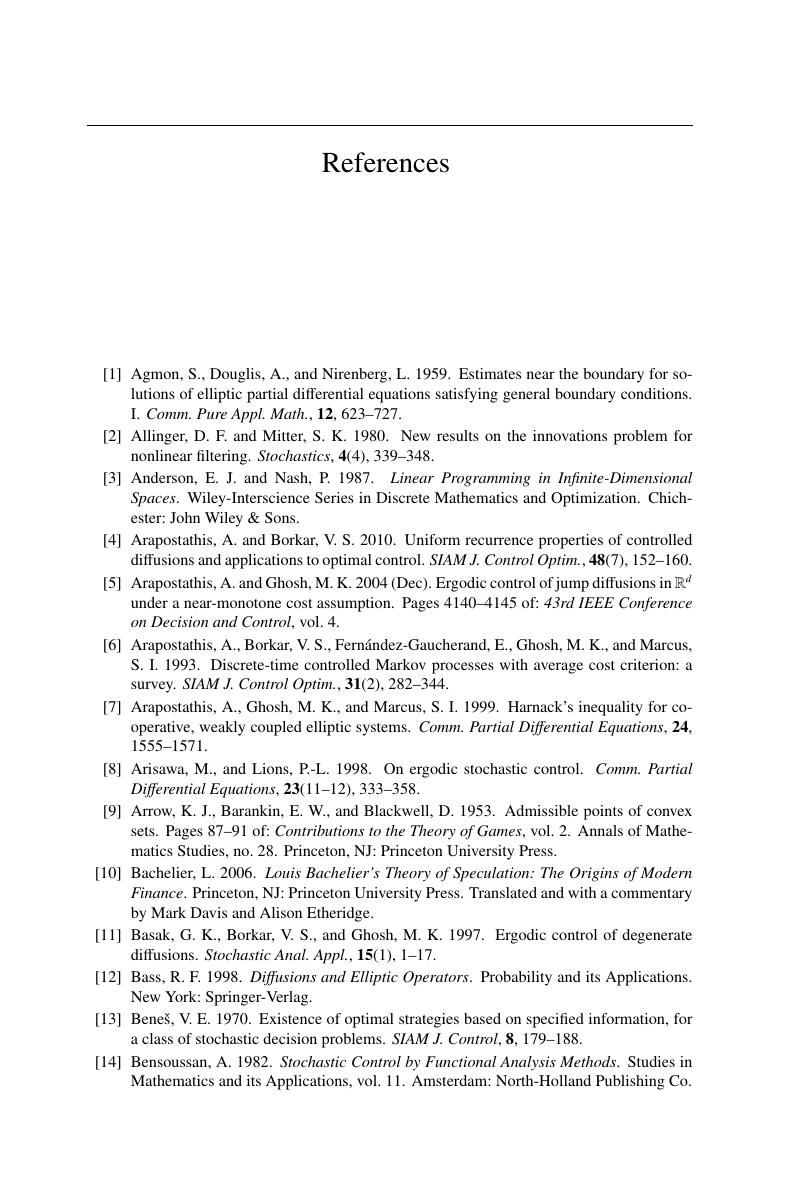Book contents
- Frontmatter
- Contents
- Preface
- Frequently Used Notation
- 1 Markov Processes and Ergodic Properties
- 2 Controlled Diffusions
- 3 Nondegenerate Controlled Diffusions
- 4 Various Topics in Nondegenerate Diffusions
- 5 Controlled Switching Diffusions
- 6 Controlled Martingale Problems
- 7 Degenerate Controlled Diffusions
- 8 Controlled Diffusions with Partial Observations
- Epilogue
- Appendix: Results from Second Order Elliptic Equations
- References
- Index of symbols
- Subject index
- References
References
Published online by Cambridge University Press: 05 December 2011
- Frontmatter
- Contents
- Preface
- Frequently Used Notation
- 1 Markov Processes and Ergodic Properties
- 2 Controlled Diffusions
- 3 Nondegenerate Controlled Diffusions
- 4 Various Topics in Nondegenerate Diffusions
- 5 Controlled Switching Diffusions
- 6 Controlled Martingale Problems
- 7 Degenerate Controlled Diffusions
- 8 Controlled Diffusions with Partial Observations
- Epilogue
- Appendix: Results from Second Order Elliptic Equations
- References
- Index of symbols
- Subject index
- References
Summary

- Type
- Chapter
- Information
- Ergodic Control of Diffusion Processes , pp. 311 - 318Publisher: Cambridge University PressPrint publication year: 2011



